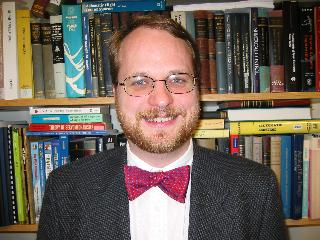EE Proto
Lecturer: Kent LundbergIn this course, students learn to design, build, and debug electronic prototype systems. Topics include multiple aspects of the prototyping process, including circuit and system design, soldering, deadbugging, troubleshooting, component selection, schematic capture, printed-circuit board (PCB) layout, PCB fabrication, PCB assembly, and thermal analysis. We will discuss the tradeoffs among "faster, better, cheaper", and explore examples in the realms of analog, digital, RF, and power. Discussions of reverse engineering, fabrication, and technical communication are included.
- Introduction to Prototyping
- Construction show and tell
- Soldering and deadbugging
- Surface-mount technology
- LED flasher build
- Schematics
- Block diagrams
- Schematic dos and don'ts
- Bills of materials (BOM)
- Start autopsy teardown
- SigSys Refresher
- Transfer functions
- Oscilloscopes and probes
- Bandwidth estimation
- Presentations
- Datasheets
- Components and datasheets
- E6 to E96 value series
- Available and important specifications
- Decoding part numbers
- Capacitors
- Types of capacitors
- Dielectric absorption
- Bypassing, coupling, filtering, integrating
- Other passive components
- PCB Layout
- Footprints and design rules
- Layers, holes, and vias
- Connectors and wires
- Mechanical concerns
- Layout Software
- Schematic capture
- Bill of materials
- Layout tutorial
- Don't use the autorouter
- Op-Amp Applications
- Circuit building blocks
- Some op-amp applications
- Multiplier circuits
- Op-Amp Nonidealities
- Nonidealities
- Measurement
- Thermal trouble
- Datasheet tour
- Oscillators
- Time-domain oscillators
- Waveform shaping
- Linear analysis
- Wien-bridge oscillator and friends
- Pulse generators
- Analog-to-Digital Conversion
- Nyquist Sampling Theorem
- Aliasing and quantization
- Signal-to-noise ratio
- Static parameters
- Dynamic parameters
- Grounding
- Where does the current go?
- Ground versus earth versus 0 volts
- Analog and digital (and power and RF)
- Ground planes, stars, and the chassis
- Power Supplies
- Band-gap references
- Linear regulators
- Buck converter operation
- Protection
- Thermal Issues
- Heat transfer basics
- Junction, case, and ambient
- Fans
- Component derating
- The price of a watt
- Noise Sources and Analysis
- Things that are not noise
- Thermal noise
- Shot noise
- Flicker noise
- Amplifier noise
- Op-amp noise analysis
Custom Courses
Custom courses, tailored specifically to your needs, are available. Inquire within.
Lecturer

Kent H. Lundberg is an educator, consultant, and historian. He is president of Keeling Flight Hardware, Ltd., which provides design, research, and educational consulting services in the fields of aerospace, electronics, and control systems for companies, universities, and government organizations.Since 2008, Dr. Lundberg has been a Visiting Professor at Olin College of Engineering, where he teaches courses in controls, circuit design, and instrumentation. From 2002 to 2005 and in 2011, he was a Lecturer with the Department of Electrical Engineering and Computer Science at the Massachusetts Institute of Technology. His research and teaching interests include the application of classical control theory to problems in analog circuit design, and the development of educational toys (lecture demos, take-home laboratory kits, and tutorial computer applications) for feedback systems and control engineering.
Dr. Lundberg was the Associate Editor for History of IEEE Control Systems Magazine from 2004 to 2011. He attended M.I.T. earning a Bachelor's degree in physics in 1992, and a Ph.D. in electrical engineering in 2002. He owns 43 Tektronix oscilloscopes, and he obsessive-compulsively collects analog synthesizers, technology artifacts, and classic textbooks on radar, nuclear energy, analog computing, and control.
Last updated at 10:11 on Thursday, 10 Jan 2013. by Kent Lundberg